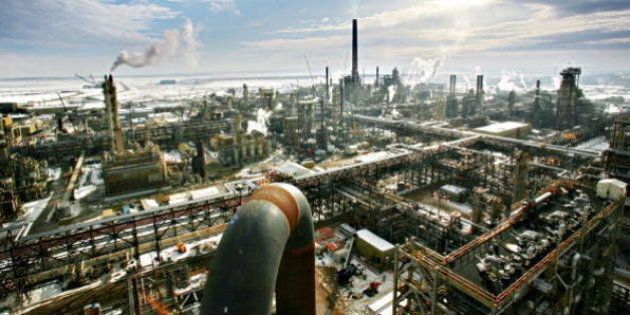
The global campaign against Canada’s oilsands has cost the industry some $19.5 billion so far, according to a report from two climate groups.
The research from the Institute for Energy Economics and Financial Analysis (IEEFA) and Oil Change International also points to falling oil prices and the Harper government’s policies on foreign investment as reasons why the oilsands are now exhibiting “weak fundamentals.” It casts doubt on the industry's plans to more than double oilsands production, to above 4 million barrels per day, from around 2 million barrels today.
The news is likely to be encouraging to climate campaigners, who have made it a strategy to keep oilsands bitumen in the ground by making it as difficult as possible for producers to bring it to market.
The report cites the campaigns against the Keystone XL, Energy East and Northern Gateway pipelines as being instrumental in the suspension of three major oilsands projects this year: Shell’s Pierre River, Total’s Joslyn North, and Statoil’s Corner Project.
“Combined, these projects would have produced 4.7 billion barrels of bitumen that would in turn have released 2.8 billion metric tonnes of carbon dioxide (CO2) into the atmosphere,” the report states.
“This is equivalent to the emissions of 735 coal plants in one year, or building 18 new coal plants that will last 40 years each.”
In all, lack of access to markets has led to lower prices for oilsands product that cost producers $35.2 billion ($30.9 billion U.S.) between 2010 and 2013, the report states. Of that, it attributes 55 per cent, or $19.5 billion, to active opposition to the oilsands.
But the researchers note there are other things going on as well, including the recent, rapid decline in the price of oil. The International Energy Agency recently estimated that a quarter of new oilsands projects would be under threat if oil prices fell further.
And in a follow-up note Tuesday, the climate researchers also put some blame on the Harper government’s foreign investment policy for the oilsands’ losses.
Following Chinese state-owned CNOOC’s buyout of Calgary-based Nexen in 2012, the Harper government put limitations on foreign takeovers by state-owned companies.
That rule “has hampered foreign investment in tar sands and dried up capital for the [smaller oilsands companies],” IEEFA said. (A University of Calgary report said pretty much the same thing earlier this year.)
And even as oil prices fall and producers struggle with financing, costs in the oilsands are growing, which means in the long term the return on investment is shrinking, the report said.
“Our takeaway … is that the tar-sands industry is in no position to sustain the capital expenditures required to support its expansion,” IEEFA said on its blog.